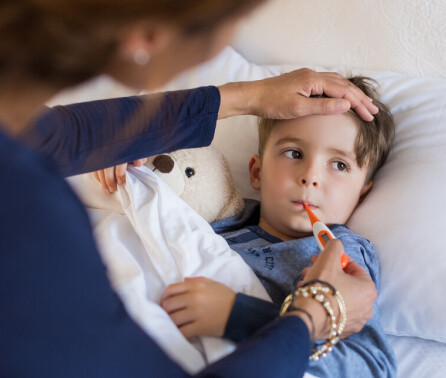BibTex format
@article{Penny:2015:10.1016/S0140-6736(15)00725-4,
author = {Penny, MA and Verity, RV and Bever, C and Sauboin, C and Galactionova, K and Flasche, S and White, MT and Wenger, EA and Van, de Velde N and Pemberton-Ross, P and Griffin, JT and Smith, TA and Eckhoff, PA and Muhib, F and Jit, M and Ghani, AC},
doi = {10.1016/S0140-6736(15)00725-4},
journal = {The Lancet},
pages = {367--375},
title = {Public health impact and cost-effectiveness of the RTS,S/AS01 malaria vaccine: a systematic comparison of predictions from four mathematical models},
url = {http://dx.doi.org/10.1016/S0140-6736(15)00725-4},
volume = {387},
year = {2015}
}
RIS format (EndNote, RefMan)
TY - JOUR
AB - BackgroundThe phase 3 trial of the RTS,S/AS01 malaria vaccine candidate showed modest efficacy of the vaccine against Plasmodium falciparum malaria, but was not powered to assess mortality endpoints. Impact projections and cost-effectiveness estimates for longer timeframes than the trial follow-up and across a range of settings are needed to inform policy recommendations. We aimed to assess the public health impact and cost-effectiveness of routine use of the RTS,S/AS01 vaccine in African settings.MethodsWe compared four malaria transmission models and their predictions to assess vaccine cost-effectiveness and impact. We used trial data for follow-up of 32 months or longer to parameterise vaccine protection in the group aged 5–17 months. Estimates of cases, deaths, and disability-adjusted life-years (DALYs) averted were calculated over a 15 year time horizon for a range of levels of Plasmodium falciparum parasite prevalence in 2–10 year olds (PfPR2–10; range 3–65%). We considered two vaccine schedules: three doses at ages 6, 7·5, and 9 months (three-dose schedule, 90% coverage) and including a fourth dose at age 27 months (four-dose schedule, 72% coverage). We estimated cost-effectiveness in the presence of existing malaria interventions for vaccine prices of US$2–10 per dose.FindingsIn regions with a PfPR2–10 of 10–65%, RTS,S/AS01 is predicted to avert a median of 93940 (range 20490–126540) clinical cases and 394 (127–708) deaths for the three-dose schedule, or 116480 (31450–160410) clinical cases and 484 (189–859) deaths for the four-dose schedule, per 100000 fully vaccinated children. A positive impact is also predicted at a PfPR2–10 of 5–10%, but there is little impact at a prevalence of lower than 3%. At $5 per dose and a PfPR2–10 of 10–65%, we estimated a median incremental cost-effectiveness ratio compared with current interventions of $30 (range 18–2
AU - Penny,MA
AU - Verity,RV
AU - Bever,C
AU - Sauboin,C
AU - Galactionova,K
AU - Flasche,S
AU - White,MT
AU - Wenger,EA
AU - Van,de Velde N
AU - Pemberton-Ross,P
AU - Griffin,JT
AU - Smith,TA
AU - Eckhoff,PA
AU - Muhib,F
AU - Jit,M
AU - Ghani,AC
DO - 10.1016/S0140-6736(15)00725-4
EP - 375
PY - 2015///
SN - 0140-6736
SP - 367
TI - Public health impact and cost-effectiveness of the RTS,S/AS01 malaria vaccine: a systematic comparison of predictions from four mathematical models
T2 - The Lancet
UR - http://dx.doi.org/10.1016/S0140-6736(15)00725-4
UR - http://hdl.handle.net/10044/1/32559
VL - 387
ER -
